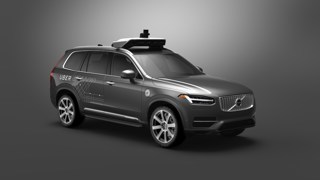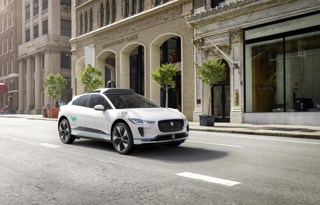Lawmakers will need to carefully consider how drivers retake control of a self-driving car after an on-the-road trial identified potential dangers.
Researchers have discovered that drivers take two to three seconds to take control of a vehicle once alerted to handover.
The findings, from the Venturer self-driving car trial, have been published in a new report by Axa Insurance UK and law firm Burges Salmon, examining the insurance and legal ramifications of autonomous cars.
David Williams, technical director at Axa, said the technology “raises questions regarding practicalities, liability and, most importantly, safety”.
The report investigates just one aspect of the driverless experience – the handover stage – and calls for greater understanding of how motorists will adapt to this new process.
“Setting the boundaries of driver and autonomous system liability will require a detailed understanding of how users interact with technology,” said Chris Jackson, head of transport sector at Burges Salmon.
“Defining the parameters of handover is an important step in delivering the driverless experience which people will expect.”
Venturer’s trials, which are taking place in the laboratory and on the roads of the University of the West of England (UWE) campus in Bristol, have highlighted the potential issues.
They have revealed better performance in frequent handover scenarios than might have been expected from earlier studies. But they showed delays in regaining control of various lengths at different speeds.
The study also revealed slower driving by participants following handover and a marked delay when retaking control at speeds ranging from 20-50mph.
The ‘handover problem’ arises more as a feature of autonomous vehicles that are ‘high-level driver assist’ – so-called level three vehicles – but are not ‘highly or fully’ autonomous (levels four and five). This is where drivers do not need to engage with a range of tasks in the driving process when the autonomous mode is selected, but do need to be able to take control when necessary.
Manufacturers have said this is of central importance in the development of self-driving cars, with Ford intending to bypass level three completely and move directly to level four.
The Government, for its part, is dealing with some of the issues around liability in the Automated and Electric Vehicles Bill, which was published last October.
Under current legislation, the insurers of the driver who is at fault pay out to third parties who have suffered damage. The question then arises as to where liability should sit where a driver relies on an automated system and is not, therefore, directly in control of the vehicle.
The Bill has defined a framework for how self-driving cars involved in accidents will be treated for insurance purposes. It proposes to extend the requirement on the insurer to pay out to affected third parties where the system, rather than the driver, is at fault.
It removes the need for an affected third party to seek redress from the manufacturer or other third party who might have some responsibility for the defective performance of the technology.
For insurance purposes, the system will effectively become the driver under these proposals (to the extent the behaviour of the system triggers a claim), with the insurer then separately being entitled to pursue the manufacturer or other third party responsible for the system’s failure to recover any compensation which it has paid to affected third parties.
Additionally, in a situation where there is a product failure when the vehicle is in an autonomous function, the driver may be the victim of a personal injury that he or she did not cause. Under existing legislation, a driver’s insurance only needs to cover third parties and not the driver themselves.
After extensive consultation, the Government has decided to widen insurance cover so that this includes damage to the driver where the automated vehicle is driving itself.
As the report suggests, the question of liability becomes more complex when the handover point between autonomous and manual driving phases is considered. Determining at what point fault lies either with the driver or with the system will be critical in determining where liability and financial responsibility, and potentially criminal liability, ultimately rests.
























john4870 - 14/05/2018 11:06
One more reason why I will not use an autonomous vehicle. And I don't believe that for one moment there will be widespread use of level 5 in my lifetime or in my area - rurally we will still need our own vehicles, our own freedom.